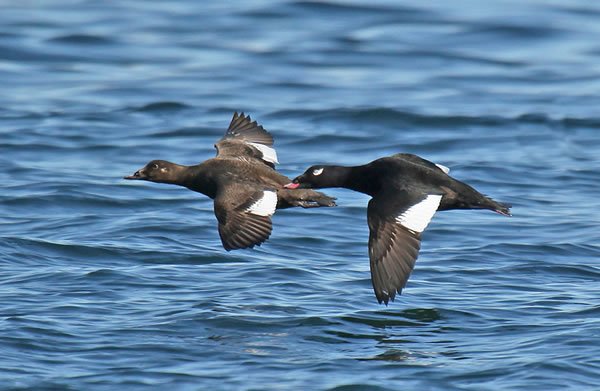Tracing Sources of Nutrients and Energy for Clutch Formation by White-winged Scoters

Project Number: 45
Year Funded: 2005
Lead Institution(s): Simon Fraser University
Project Lead: Dan Esler
Collaborator(s): Stuard Slattery (DUC), Jean-Michel DeVink (USask), Eric Anderson (UW), James Lovvorn (UW), Cindy Swoboda (USask), David Safine (UAF)
Location: Pacific Flyway
Focal Species: White-winged Scoter (Melanitta delgandi)
Project Description: This study entails identifying important habitats for White-winged Scoters (WWSC) by determining where and when females acquire nutrients for reproduction. This is important because (1) the reasons for scoter declines are unknown; (2) WWSC strategies for nutrient acquisition are unclear; (3) acquisition and allocation of nutrients for reproduction have been linked to waterfowl productivity; and (4) this work will result in clear implications for management of habitats that contribute to WWSC productivity. In conjunction with related studies, samples of adult female reserves and reproductive tissue, as well as key prey items, were collected in 2002-2006 in three breeding areas. The primary objective is to use tissue and prey samples available from multiple concurrent and past studies to evaluate the timing and location of nutrient and energy acquisition for reproduction by female WWSC across their breeding range in western North America.
Project Reports:
